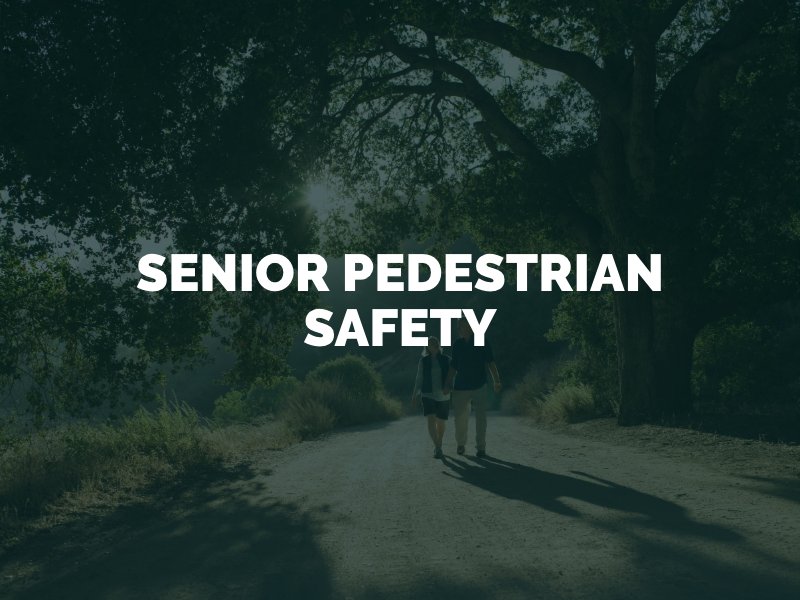As important as it is for senior citizens to get fresh air and exercise, it is equally critical that they stay safe as pedestrians in Denver. Pedestrians are the road’s most vulnerable users, with children and the elderly the most at-risk populations. In 2018 alone, 90 pedestrians in Colorado lost their lives in traffic accidents. Although drivers carry a great responsibility to prevent pedestrian collisions, pedestrians can take steps to improve their safety as well. Senior pedestrians should be especially proactive about their safety while walking around Denver.

A common mistake that can lead to a pedestrian-vehicle collision is using roads in urban areas that do not have sidewalks. It is not safe for a pedestrian to walk alongside the edge of the road, even in a place with a wide shoulder. Senior pedestrians should only take routes with sidewalks throughout Denver. They should choose routes with slower-moving traffic and lower speed limits whenever possible, such as residential streets with speed bumps and other measures to reduce speeds. Areas with lower speed limits help to keep pedestrians safe. Seniors and all pedestrians should walk in a direction facing oncoming traffic. This may allow the pedestrian to move out of the way if an oncoming vehicle veers into his or her path.
Most pedestrian accidents occur while the pedestrian is trying to cross the road. Seniors should only cross at safe locations: marked crosswalks and intersections. No pedestrian should break Colorado’s traffic laws by jaywalking, or crossing the road in between two marked intersections. Jaywalking can be unexpected for drivers, who may not notice or see a crossing pedestrian in time to stop. Jaywalking also increases the risk of a pedestrian stepping off a curb when it is not safe to do so – especially if that pedestrian is older and has poor eyesight and hearing. A senior should only use a crosswalk, and only when it is safe to cross.
Road users breaking traffic laws is a leading cause of pedestrian accidents. While many collisions stem from driver errors, pedestrians making mistakes while crossing the road also contribute. Elderly pedestrians should walk with caregivers if they cannot see traffic control signs or safely understand when to cross. Senior citizens must pay attention to roadway signs when walking, and especially when crossing. Pedestrians should only cross streets and intersections when given the signal to do so. They should cross at intersections with traffic control devices whenever possible.
Visibility is a significant safety issue for pedestrians. Wearing dark colors and walking at night can increase the risk of a driver failing to see a pedestrian walking next to the road or crossing the street. Seniors should avoid walking between dusk and dawn as much as possible. Taking a walk at night increases the risk of drivers failing to see pedestrians. Walking at night also comes with an increased risk of encountering drunk and reckless drivers in Denver. All pedestrians should enhance their visibility by wearing bright colors when taking walks throughout Denver. Seniors walking in areas without streetlights should walk with flashlights and reflective vests.
Not all pedestrian accidents and injuries involve motor vehicle collisions. Many arise from slip or trip and fall accidents while walking. More than one in three senior citizens (over the age of 65) fall each year. Falls on sidewalks and crosswalks can cause bone fractures and related serious health complications. Seniors can help prevent fall accidents while walking around Denver by wearing safe and comfortable nonslip shoes, avoiding medications that cause dizziness before taking a walk, having their eyesight tested regularly, getting enough sleep, using an assistive device when necessary, and avoiding wet and icy surfaces.